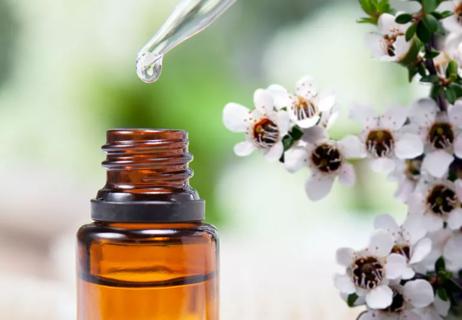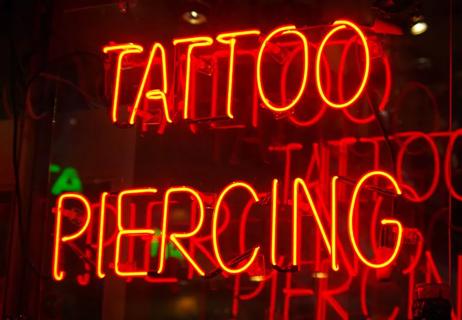Twice-a-day cleaning with a saltwater solution can help you resolve (and avoid) problems

You finally got your belly button pierced after months of thinking about adding some body bling. That cute little ring decorating your tummy looks fantastic, too.
Advertisement
Cleveland Clinic is a non-profit academic medical center. Advertising on our site helps support our mission. We do not endorse non-Cleveland Clinic products or services. Policy
Unfortunately, the same can’t be said for the skin around your piercing. Infections or some other icky complication can affect nearly 1 of 4 body piercings away from the earlobe, research shows.
So, how can you tell if your belly button piercing is infected? And how should you treat that festering hole? For answers, we turn to family physician Simon Hodes, MB ChB.
Let’s start with the basics: Even when a belly button piercing goes well, you can expect some tenderness, redness and even crusting at the spot for 12 to 18 months. After all, you did just put a hole through your skin and into your body.
“While earlobe piercing is very common and usually straightforward, your belly button is probably an area of your body that doesn’t really want to be pierced,” says Dr. Hodes. “So, if you’re going to do it, make sure you’re in it for the long haul.”
It can take up to a year or longer for the “wound” from a belly button piercing to fully heal, explains Dr. Hodes. That’s a lengthy timeframe that extends your risk of eventually getting some sort of infection.
Why does it take so long? Think of all the bending, twisting and stretching your midsection does during the day. All of that movement doesn’t exactly help speed along your body’s repair process.
Advertisement
“The healing process is not quick,” notes Dr. Hodes. “An infection can flare up a long time after the initial piercing is done. So, good hygiene and belly ring care are essential from Day 1 to reduce the risks of problems.”
(On that note, think carefully about getting a belly button piercing if you’re considering a pregnancy in the next 18 months, says Dr. Hodes. New piercings can be problematic and often need to be removed as your stomach stretches.)
So, how do you know when trouble arrives? Here are four telltale signs that dirt or bacteria may have entered your pierced navel and caused an infection.
Swelling from an infected piercing can range from an annoying irritation to an abscess (or pocket of pus). The spot may feel warm to the touch, too. “There’s a whole spectrum of infection seen, from minor local skin infection to more severe infections that may require drainage,” says Dr. Hodes.
An infection can lead to bright red marks or discoloration on your skin. “It’s the sort of change that will be noticeable.”
It’s generally not a good sign when a wound leaks pus. The discharge from an infected piercing could be yellow, green, gray, brown, white or bloody red. “If the ooze is smelly, then it’s more suggestive of an infection,” says Dr. Hodes.
Although rare from a piercing, an infection that takes root and rages could leave you with a fever and chills. In extreme cases, your body’s response to the infection could lead to sepsis and a need for urgent medical attention.
Red and itchy skin around a piercing also could signal an allergic reaction to whatever jewelry is now dangling from your midsection. “The symptoms can seem very similar to an infection,” says Dr. Hodes.
In general, an allergic reaction to jewelry metal will more closely resemble hives or dry, itchy eczema patches. It’s also less likely to ooze.
“If you suspect an allergic reaction, you may want to try oral antihistamine or a topical hydrocortisone cream from your local pharmacy,” advises Dr. Hodes. “If that doesn’t calm it down, consult a healthcare professional.”
Metals regarded as safe for body piercings include stainless steel, titanium or gold (14- or 18-karat). Jewelry made from lower-grade metals such as nickel, cobalt and chromates is more likely to cause issues. “However, people can react to any foreign material,” he adds.
(Learn more about metal allergies from a dermatologist.)
If you suspect an infection in your belly button piercing, it’s time to up your cleaning game. Your piercing should be cleaned twice a day. (That rule holds true whether it’s to prevent an infection or to treat one, too.)
Advertisement
“You need to commit to keeping your piercing clean from Day 1,” Dr. Hodes reiterates. “If you don’t, it’s far more likely you could run into problems.”
Follow these simple steps to treat an infected piercing:
Placing a warm compress on the infected area may help settle down any swelling, too.
Don’t remove the jewelry if you suspect an infection, either — except on medical advice. “You want to leave it in place to keep the hole open if possible,” directs Dr. Hodes.
Advertisement
Check in with a healthcare provider if you really start to feel unwell or the swelling and redness refuse to go away (or get worse) even after you’ve tried a few home treatment options
“If you feel like the infection is spreading and progressing, it’s time to see someone,” states Dr. Hodes. “Follow the golden rule of worry: If in doubt, check it out.”
Infections can take root in your belly button piercing even with the best of care. Again, anytime there’s an open wound on your body there’s a risk of something funky getting in and creating an issue.
But you can limit your pus potential by following these tips.
Advertisement
Go into it with the understanding that a typical recovery period can be six months to a year, but that it may take as long as 18 months. Commit to cleaning the piercing at least twice a day, too.
And know that an infection is far more likely if you don’t take proper precautions.
“Just be careful about where you go to get your piercing and your long-term aftercare,” cautions Dr. Hodes. “If you keep the piercing clean, odds are you’ll have no issues and will just be able to enjoy your new bling.”
Learn more about our editorial process.
Advertisement

Earlobe piercings heal quicker and are less painful than cartilage piercings — proper cleaning and care are important

Soap, water and an antibiotic ointment are your best bet

It isn’t risk free and shouldn’t replace the aftercare recommended by your piercer

Understand the risks and take precautions against infection

A dermatologist explains why it happens and how to address it

Covering your mouth when you cough and staying home when you’re sick are a couple ways to help keep yourself and others COVID-free

These red, raised bites often show up in a zigzag pattern on areas of your skin that come into contact with bedding

Some things you find in your house have antifungal properties — but that doesn’t mean they’ll clear your toenail fungus

If you’re feeling short of breath, sleep can be tough — propping yourself up or sleeping on your side may help

If you fear the unknown or find yourself needing reassurance often, you may identify with this attachment style

If you’re looking to boost your gut health, it’s better to get fiber from whole foods